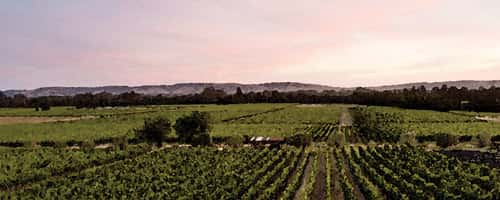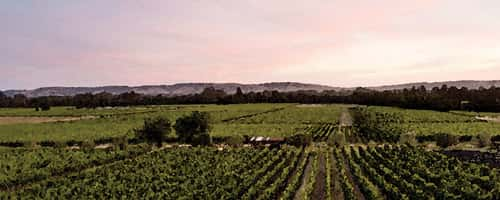At a Glance
Gundlach Bundschu Winery
2000 Denmark St.
Sonoma, Calif. 95476
(707) 938-5277
www.gunbun.com
Tasting Fees: $20 per person
Wines Offered: 2016 Chardonnay, 2015 Pinot Noir, 2014 Merlot, 2015 Tempranillo, 2014 Cabernet Sauvignon
Reservations: Recommended
Picnics: Yes
Pets: Yes
Did You Know? Gundlach Bundschu is located at the foot of the Mayacamas Mountains, along the Napa-Sonoma border. Named “Rhinefarm” by its founder Jacob Gundlach, the 320-acre estate vineyard is situated on three appellations—Sonoma Valley, Carneros and Napa Valley.
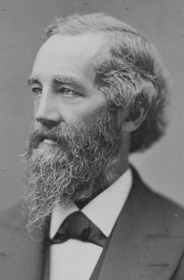 Every year in March, Gundlach Bundschu Winery honors its founder, Jacob Bundschu, with its annual “Deed Day” event for wine club members with traditional German food and live music. But this year’s event is especially notable—the winery is celebrating its 160th anniversary, making it the oldest family-owned winery in California.
Every year in March, Gundlach Bundschu Winery honors its founder, Jacob Bundschu, with its annual “Deed Day” event for wine club members with traditional German food and live music. But this year’s event is especially notable—the winery is celebrating its 160th anniversary, making it the oldest family-owned winery in California.
The Gundlach Bundschu story began in 1850 when Jacob Gundlach left Germany for America. “Jacob wasn’t the eldest son, so he knew he wouldn’t inherit the family business. He came to California for the Gold Rush,” says Katie Bundschu, great-great-great granddaughter of the founder. A string of unfortunate events slowed his voyage. He was shipwrecked on the Cape Verde Islands, then delayed in Rio de Janeiro for four months waiting for insurance money to pay his way to America. He arrived in San Francisco a year later. “He missed the Gold Rush, but he knew how to brew beer and make wine,” says Katie. Jacob opened a brewery on Vallejo Street in San Francisco, but his passion was wine. He purchased 70 acres in Sonoma on March 12, 1858, and christened it Rhinefarm because it reminded him of his homeland in Bavaria, Germany. That same year, he returned to Bavaria and married his long-time love, Eva, on July 4. They spent their honeymoon traveling through Germany and France purchasing the rootstock he would begin planting on Rhinefarm. Jacob and Eva had seven children together, and though they’d planned to return to Germany, they remained in Sonoma County. As for the business, Jacob eventually realized he was a farmer, not a businessman, so he partnered with Charles Bundschu, who later married Jacob and Eva’s eldest daughter, Fransiska. When Jacob died in 1894, the family legacy continued at the winery through the Bundschus.
Over the years, Gundlach Bundschu has survived the earthquake of 1906, Prohibition and the October 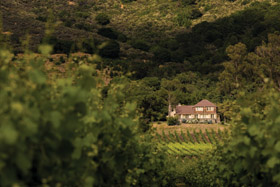 wildfires, though three buildings on the property burned to the ground, including the longtime home of the fifth generation, Jim and Nancy Bundschu. What’s the bond that has held the family business together all these years? “Mostly luck and we don’t talk about business when spending time as a family,” says Katie. Resolve and resilience are also part of the equation. “We thought about that a lot during the fires,” she adds. “We have the proud history of our great-great-great grandfather and we want to steward that history from our ancestors. During the fires, we found inspiration to move forward by reflecting on our past.”
wildfires, though three buildings on the property burned to the ground, including the longtime home of the fifth generation, Jim and Nancy Bundschu. What’s the bond that has held the family business together all these years? “Mostly luck and we don’t talk about business when spending time as a family,” says Katie. Resolve and resilience are also part of the equation. “We thought about that a lot during the fires,” she adds. “We have the proud history of our great-great-great grandfather and we want to steward that history from our ancestors. During the fires, we found inspiration to move forward by reflecting on our past.”
Today, Gundlach Bundschu (pronounced gun-lock-bun-shoe)—also known as Gun Bun— is owned and operated by the sixth generation of Bundschus. The winery offers critically-acclaimed wines and a low-key Sonoma County vibe.
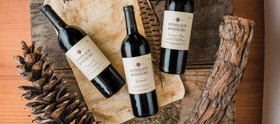 We begin with the 2016 Chardonnay. Grown on the valley floor, this Chardonnay is both vibrant and complex, a result of sourcing the fruit from both old and new vines. “It holds moisture and nutrients, and volcanic soil produces more complex, well-developed wines,” says Gabriel Bresic, estate sommelier.
We begin with the 2016 Chardonnay. Grown on the valley floor, this Chardonnay is both vibrant and complex, a result of sourcing the fruit from both old and new vines. “It holds moisture and nutrients, and volcanic soil produces more complex, well-developed wines,” says Gabriel Bresic, estate sommelier.
Next, we taste the 2015 Pinot Noir. Fragrant and velvety, it offers notes of warm cherry, cranberry, sweet vanilla and spiced toffee. Like the Chardonnay, the fruit is sourced from old and new vines and offers both a crisp acidity and complex earthiness.
 Some wineries no longer include Merlot on the tasting room menu since the dark days following “Sideways,” but Gun Bun has a long history with this varietal and embraces it. The 2014 Merlot offers a smooth plum and black cherry flavor with surprising notes of fresh herb. “Merlot grows well on the property,” says Katie, vice president of sales and marketing. “The vines grow on a hillside and on the valley floor.”
Some wineries no longer include Merlot on the tasting room menu since the dark days following “Sideways,” but Gun Bun has a long history with this varietal and embraces it. The 2014 Merlot offers a smooth plum and black cherry flavor with surprising notes of fresh herb. “Merlot grows well on the property,” says Katie, vice president of sales and marketing. “The vines grow on a hillside and on the valley floor.”
Next we try the 2015 Tempranillo, a small production, direct-to-consumer wine. The Tempranillo is fun—medium bodied and offers a surprising combination of black cherry, blackberry and a tobacco smokiness. And finally, we try the 2014 Cabernet Sauvignon, which is structured and offers a nice acidity with notes of dark plum, blueberry and cinnamon.
After 160 years, Gun Bun is an icon in the wine business and a rich part of Sonoma County history. As for the future, the sixth generation is always on the quest to produce high-quality wines for the region. “We wake up every morning thinking about how to drive our business forward so we can ensure that we’re still family-owned 160 years from 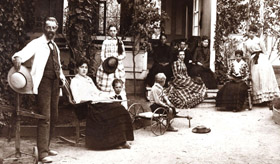 now,” she says. “Well, maybe not that long, but at least for the next Bundschu generation.”
now,” she says. “Well, maybe not that long, but at least for the next Bundschu generation.”
Author
-

Karen Hart is the editor of NorthBay biz magazine, keeping her finger on the pulse of the North Bay, directing content and leading day-to-day operations of the editorial team. An award-winning writer, Karen brings more than 30 years of experience to the position. She is a member of the California Writers Club, and serves on the Journalism Advisory Council at Santa Rosa Junior College. She moved to Sonoma County in 2000, and she’s here to stay.
View all posts


